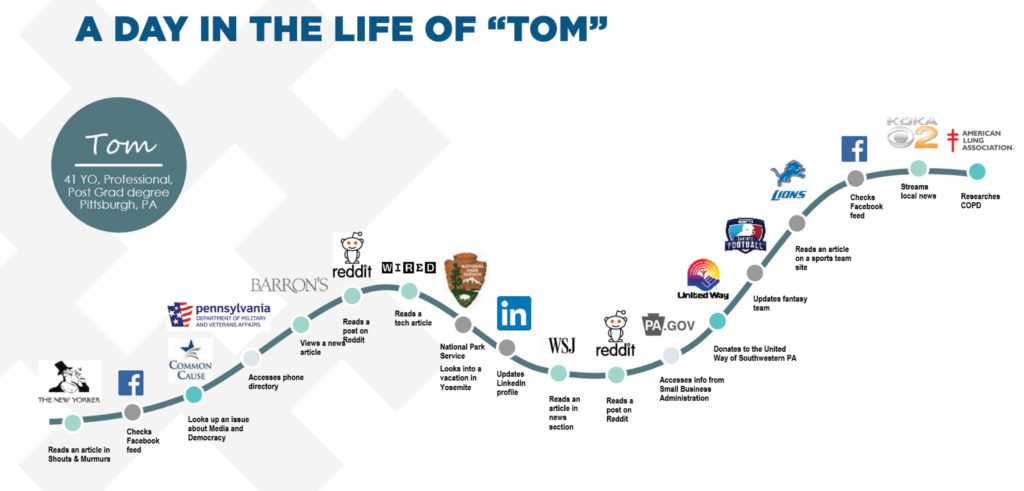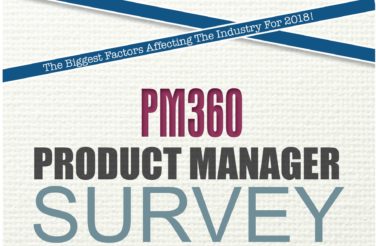The pharmaceutical industry is beginning to embrace the world of analytics and deep customer understanding that’s been established in other industries, and it’s happening just in time.
Pharma companies are under more scrutiny, regulatory pressure, and financial pressure than ever before. The competition is getting heated due to specialty drugs, biologics, and biosimilars. This environment is driving the need for much stronger targeting and deeper analytics in order to guarantee less waste and higher returns on marketing spend.
Other industries embraced the world of analytics and deep customer insights to drive engagement and conversion long ago. Unfortunately, the pharmaceutical industry has been missing out due to strict regulations and cautious brand managers. Now, as technologies have improved, it’s all achievable within HIPAA and other regulatory guidelines due to the ability to understand HCP or DTC behavior at an anonymous level. As a result, the industry is beginning to truly embrace analytics.
Where to Start?
First and foremost, it is time for pharmaceutical marketers to stop thinking of their target audience as a demographic. Regardless of whether you are targeting a physician or a patient, they are individual people. Individual people who have adapted and evolved with technology and who have individual expectations around education and care. They want to be understood and spoken to in a way that engages them as an individual. For instance, Dr. Jones, a 48-year-old cardiologist in a high-prescribing decile, does not wake up in the morning and expect his wife to call him Dr. Jones. He is John. John is more than the eight hours a day that he puts on his white coat. John has likes and dislikes, and in order to communicate with John effectively, you need to speak in a voice that connects to him personally.
But How Do We Get There?
Media analytics and data need to come to the front in the creative planning process. With media changing at the rate that it is, a brand will always be better positioned against the competition if it has behavioral insights about the person it is trying to communicate with. It’s important to recognize that individual media tactics do not drive change in today’s pharma landscape. Individual media tactics drive actions and behaviors that lead to the use of other media channels as patients and doctors navigate through their individual journey. Each touchpoint is an opportunity to engage, and collectively these individual brand moments ladder up to deeper engagement and stronger customer relationships. Not everyone has the same journey or the same needs, so supporting them in their unique journey rather than pushing a one-size-fits-all communication approach provides a more customer-centric way to drive a brand’s business growth. The first step on the path to engagement is individual research. Physicians and consumers are, at the end of the day, all people looking for answers.
Understanding the Audience
In order to be more successful in reaching your audience, it’s paramount to build a rich data stack in order to micro-target high-value targets and then build upon that success through the broadening of relevant audiences to create a network effect. Tools such as DNA, developed by IPG Mediabrands’ healthcare agency Healix, layer traditional qualitative marketing data with the psychology of human qualitative engagement and allow us to see not only the what, where, when, and how people engage with a communication program, but also the “why” people engage the way they do. From a consumer perspective, it allows us to understand individual engagement habits and the communications voice that people respond to most effectively, all anonymously and within HIPAA guidelines. From an HCP perspective, we can understand the psychological and emotional drivers behind certain practices of medicine.
In this environment we can understand not only a stream of what people do and where they do it as individuals digitally, but we can examine what television programming that certain groups of physicians or patients watch more than others. This transforms targeting far beyond the digital landscape. We are able to understand individual media journeys dynamically to know what media channels trigger the next step in the media journey and follow individuals more effectively through their process of research and exploration. By layering comprehensive data, it helps inform media decisions, provide hyper-accurate analytics and insights, apply unparalleled intelligence to programmatic digital campaigns, and power advanced TV.
The innovation all of this data is providing doesn’t end there. Utilizing additional tools that have been built off the back of anti-terrorist technologies, such as IPG Mediabrands’ Pursway, we are able to identify and target idea influencers and thought leaders in order to broaden influencer connections. Programmatic media allows us to engage in contextual and behavioral targeting based off of insights generated through online behavior, segmentation based off of hospital or physician office visitation, and retargeting and look-a-like marketing. Utilizing mobile technology, we can build geo-fencing and beacon-driven tagging so that we can be more effective in knowing that we are reaching the right audience based upon places that they have physically visited, even after they are back at their home or office.
Applying Media Insights to Creative
By bringing media insights to the forefront and ensuring a strong working relationship between the media agency and the creative agency, we can identify the best kind of creative voice that will impact an audience most effectively. From a digital perspective, we can see the online habits of an anonymous individual over the course of an average day.
Once we understand the media habits, we have a perspective on the engagement priorities of an individual and are able to deliver customized creative, with the same overall message, but in a different voice, through the application of dynamic creative.
 In the example above, we have “Tom,” a 41-year-old professional from Pittsburgh. Utilizing a creative and programmatic ad server, advertisements can be customized to speak in the voice of a computer programmer while “Tom” is visiting Wired, and in the voice of a football fan when he is on ESPN. By applying these insights at the earliest moment in strategy development, the creative team is empowered to develop messaging that speaks directly to the target audience in the way and manner that they want to be spoken to within the context of the media they are consuming.
In the example above, we have “Tom,” a 41-year-old professional from Pittsburgh. Utilizing a creative and programmatic ad server, advertisements can be customized to speak in the voice of a computer programmer while “Tom” is visiting Wired, and in the voice of a football fan when he is on ESPN. By applying these insights at the earliest moment in strategy development, the creative team is empowered to develop messaging that speaks directly to the target audience in the way and manner that they want to be spoken to within the context of the media they are consuming.
Often pharma brands look at technological advances in advertising and marketing as being hurdles to overcome or avoid altogether. However, with the right perspective, we can turn technology to our advantage and allow it to work harder and more effectively for us within the boundaries of privacy and regulation. We have reached that point, and the tools that have been developed for consumer brands have been modified to be particularly effective within the pharma industry…just in the nick of time.








